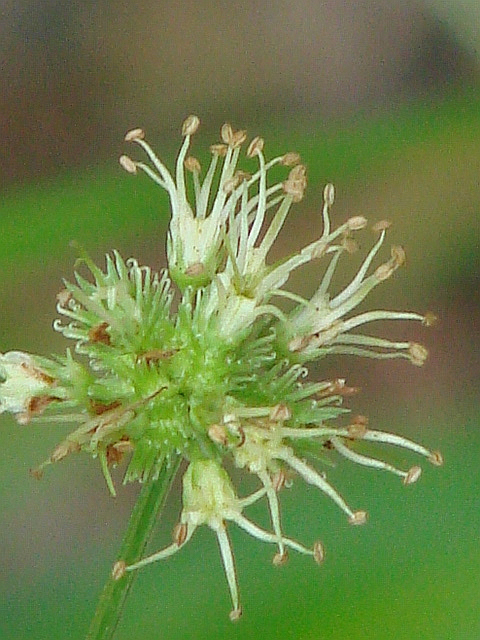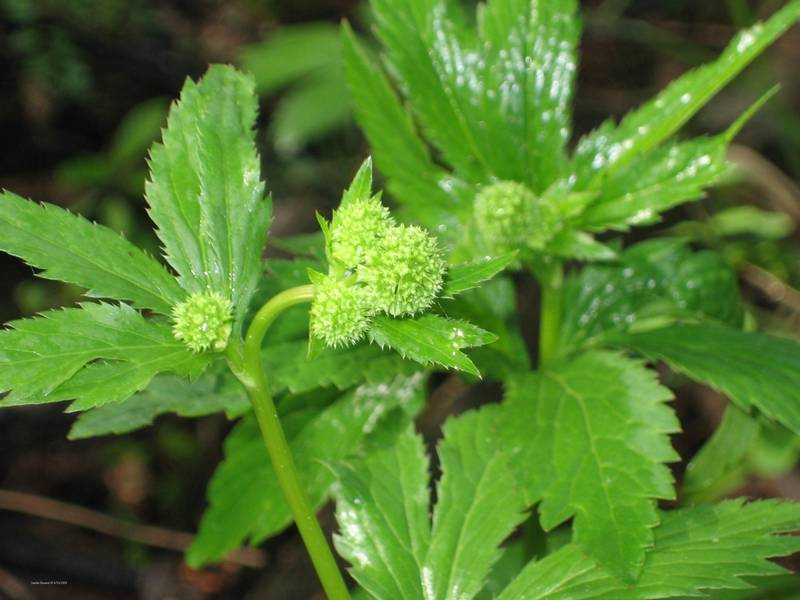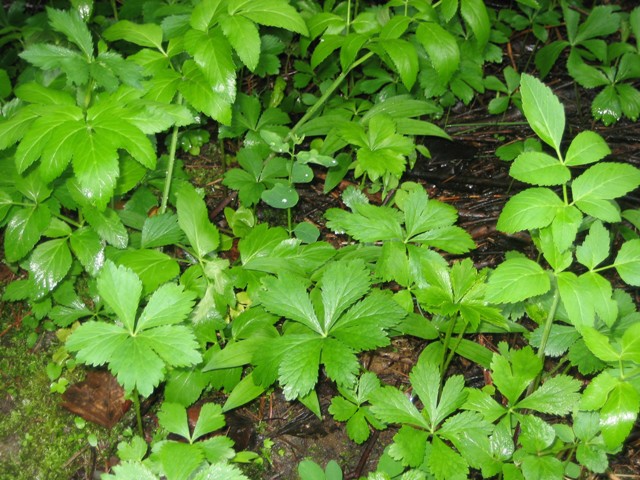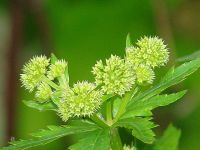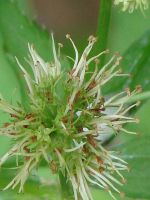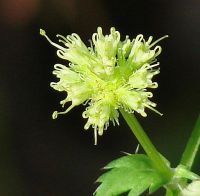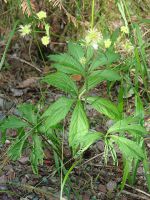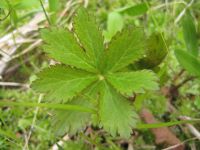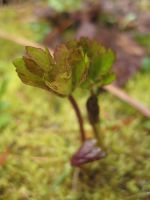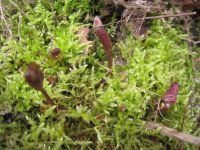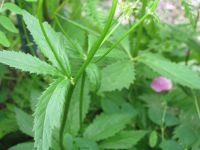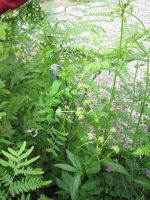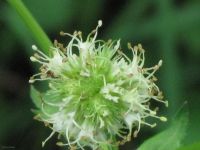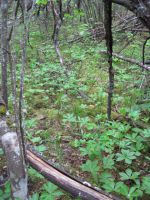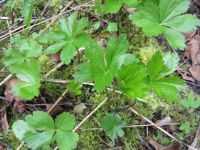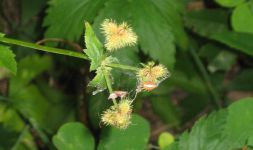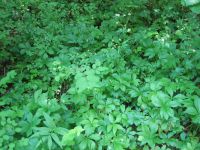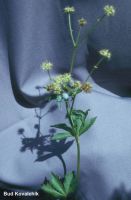Distribution: Occurring east of the Cascades crest in the northeastern counties in Washington; Eastern British Columbia to northeast Washington, east to the Atlantic coast.
Habitat: Moist, low ground, less often on moist, wooded slopes.
Flowers: May-June
Origin: Native
Growth Duration: Perennial
Conservation Status: Not of concern
Pollination: Bees, flies, moths
Perennial with a cluster of fibrous roots from a short crown, the stem solitary, erect, branched only above, 4-12 dm. tall.
Basal and lower cauline leaves long-petiolate, the blade 6-15 cm. wide, palmately 5- to 7-parted or palmately compound, the segments or leaflets toothed or lobed; cauline leaves several, gradually reduced upward, becoming sessile.
Umbels head-like, subtended by leaf bracts, 1 cm. wide or less, greenish-white, 15- to 25-flowered, the majority staminate; calyx lobes 5, firm, triangular, tapered; styles 2, elongate, persistent.
Fruits ovoid, 4-6 mm. long and 3-5 mm. wide, covered with numerous hooked prickles.
Publication: Sp. Pl. 1: 235 1753.
Sanicula canadensis var. marilandica
Sanicula marilandica L. var. petiolulata Fernald
PNW Herbaria: Specimen records of Sanicula marilandica in the Consortium of Pacific Northwest Herbaria database
WA Flora Checklist: Sanicula marilandica checklist entry
OregonFlora: Sanicula marilandica information
E-Flora BC: Sanicula marilandica atlas page
CalPhotos: Sanicula marilandica photos

